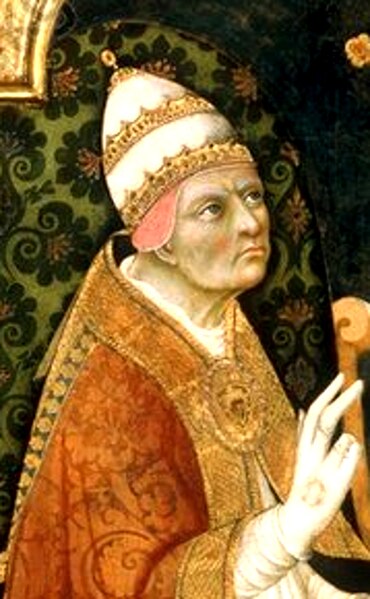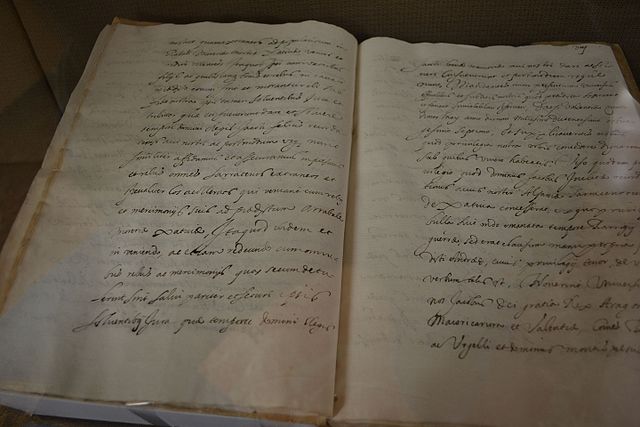The House of Borgia was a Spanish noble family, which rose to prominence during the Italian Renaissance. They were from Xàtiva, Kingdom of Valencia, the surname being a toponymic from the town of Borja, then in the Crown of Aragon, in Spain.
Painting by John Collier, "A glass of wine with Caesar Borgia", from left: Cesare Borgia, Lucrezia, Pope Alexander, and a young man holding an empty glass. The painting represents the popular view of the treacherous nature of the Borgias – the implication being that the young man cannot be sure that the wine is not poisoned.
Alfons de Borja Pope Callixtus III
Rodrigo Borja Pope Alexander VI, father of Cesare, Giovanni, Lucrezia and Gioffre.
Giovanni Borgia 2nd Duke of Gandia
Xàtiva is a town in eastern Spain, in the province of Valencia, on the right (western) bank of the river Albaida and at the junction of the Valencia–Murcia and Valencia Albacete railways. It is located 25 km west of the Mediterranean Sea. During the Al-Andalus Islamic era, Arabs brought the technology to manufacture paper to Xàtiva. In the 12th century, Xàtiva was known for its schools, education, and learning circles. Islamic scholar Abu Ishaq al-Shatibi's last name refers to Xàtiva where he lived and died. After the Reconquista by Northern Christian kingdoms and the following Christian repopulation, the city became the cradle of one of the most powerful and controversial families of the Renaissance, the House of Borgia, which produced Popes like Callixtus III and Alexander VI.
View of Xàtiva
Municipal charter of Xàtiva (1252).
Panoramic view of Xàtiva
Portrait of Philip V of Spain purposefully exhibited upside down in the Museum of Almodí [es]








![Portrait of Philip V of Spain purposefully exhibited upside down in the Museum of Almodí [es]](https://upload.wikimedia.org/wikipedia/commons/thumb/7/7e/X%C3%A0tiva._Almod%C3%AD._Felip_V_i_cadira-2.jpg/450px-X%C3%A0tiva._Almod%C3%AD._Felip_V_i_cadira-2.jpg)